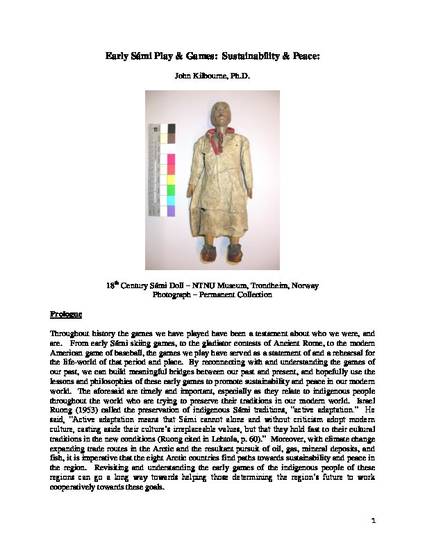
Unpublished Paper
Early Sami Play & Games.docx
(2020)
Abstract
With climate change expanding trade routes in the Arctic and the resultant pursuit of oil, gas, mineral deposits, and fish, it is imperative that the eight Arctic countries find paths towards sustainability and peace in the region. Revisiting and understanding the early games of the Sámi can go a long way towards helping those determining the region’s future to work cooperatively towards these goals.
Throughout history the games we have played have been a testament about who we were, and are. From early Sámi skiing games, to the gladiator contests of Ancient Rome, to the modern American game of baseball, the games we play have served as a statement of and a rehearsal for the life-world of that period and place. By reconnecting with and understanding the games of our past, we can build meaningful bridges between our past and present, and hopefully gain a better understanding of our modern world. The aforesaid are timely and important, especially as they relate to indigenous people throughout the world who are trying to preserve their traditions in a fast changing modern world.
This paper offers, based on my research and experiences in the Arctic, lessons learned from early Sámi games that may help promote sustainability and peace in the Arctic world. Hopefully by acknowledging these lessons we can pursue a path forward, together reconnecting with the early games of the Arctic with the hope of building meaningful bridges between the past and present and moreover, helping to enhance our understanding of the important role early games can play in shaping an Arctic where sustainability and peace flourish.
Keywords
- Sámi,
- Early Games,
- Sustainability
Disciplines
Publication Date
Spring April 24, 2020
Comments
For additional information contact:
John Kilbourne, Ph.D.
Professor Grand Valley State University
kilbourj@gvsu.edu
616-331-8683
Citation Information
Early Sámi Play & Games: Sustainability & Peace
Creative Commons License

This work is licensed under a Creative Commons CC_BY-NC-SA International License.